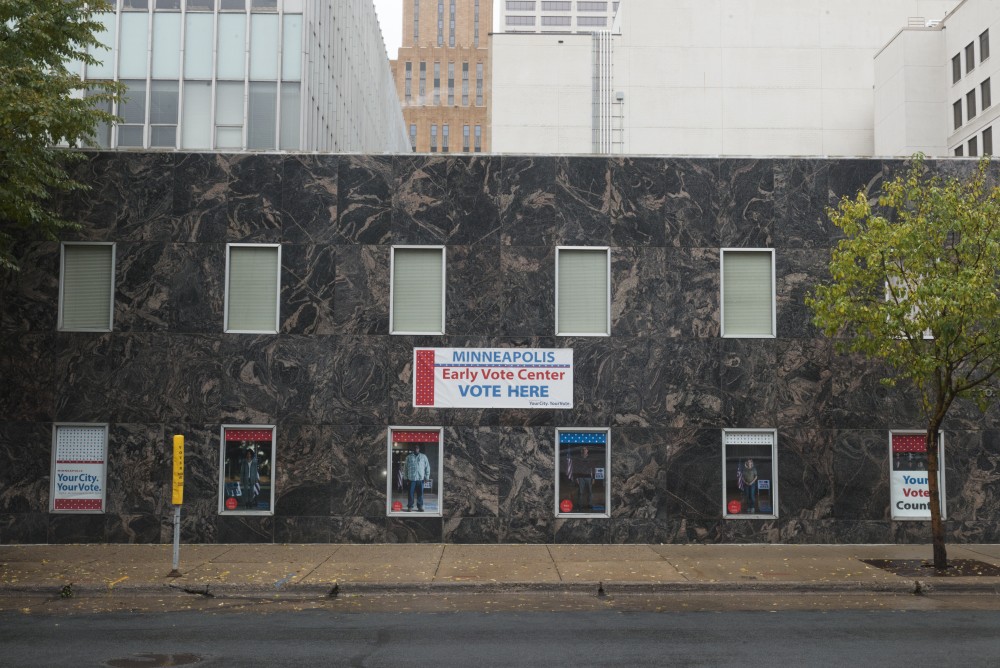Early voting began Sept. 21 for the general election at a downtown Minneapolis location, where city data shows areas around the University of Minnesota campus netting high turnout rates.
Although experts say the numbers around campus don’t necessarily indicate increased voter turnout among students, who historically are not a strong base of voters, efforts to make voting around the University easier may foreshadow high general election student turnout at polls.
“I’m seeing more interest in voting this time than even two years ago,” said David Schultz, political science professor at Hamline University. “Especially during midterm elections, college students generally don’t turn out in near the same percentages as those are over the age of 30.”
The total number of early voters in Minneapolis to date is 5,050, according to the City’s Voter and Election Services. Ward 3, which includes Marcy-Holmes and Dinkytown, saw 620 of those votes, netting the second-highest early voter turnout in the city after Ward 7.
Ward 2, which encompasses students living in the Como neighborhood, contributed 257 early votes while West Bank’s Ward 6 netted 540.
“I think a couple things are going on with this election,” Schultz said. “It does appear that, nationwide, you have that extra enthusiasm due to that anti-Trump fever. We also have a potentially high voter turnout in the 5th District because of Ilhan Omar.”


Only 22 percent of students showed up at the polls for 2016’s general elections, according to Larry Jacobs, director of the University’s Center for the Study of Politics and Governance.
“If you’re a no-show, politicians notice and they treat you like a no-show,” Jacobs said. “Students want to know why their tuition is going up.”
An early vote center is set to open in the University Field House lobby on Oct. 30, a week before the Nov. 6 election day. It will be the first early voting center held directly on campus, which experts say could secure more student votes.
“When you are talking about getting students to vote early, in my experience, students haven’t been motivated to vote by mail,” said Sonia Neculescu, chair of DFL Senate District 60 and founder of Women for Political Change. “In person is more appealing, but the early vote center is downtown so it’s hard to get there.”
Neculescu said the City’s decision to have the center on campus was in part due to pressure from campaigns and students from the University, who think the center will make voting a lot more accessible for students.
Distance from polls has historically been a barrier to student voting, Jacobs said.
Early voting on campus simplifies that distance, according to Jacobs, who noted the decision to house an early-vote center on campus could also benefit the University in the Legislature.
“Universities are in the business of young people and students have been not a priority,” Jacobs said. “Students have seen this in rising tuition. The center on campus will have an impact. For the U, it’s a smart thing to be doing.”









